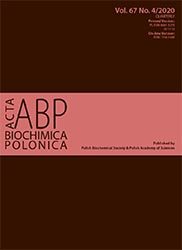The renin-angiotensin-aldosterone system blockade and arterial stiffness in renal transplant recipients – a cross-sectional prospective observational clinical study
Abstract
Introduction. Arterial stiffness parameters can be used as a predictor of cardiovascular events in the general population and renal transplant recipients (RTRs). Additionally, the renin-angiotensin-aldosterone-system (RAAS) blockade mitigates arterial stiffness in the general population. There are no sufficient data concerning the role of the RAAS blockade in reducing arterial stiffness among patients after kidney transplantation. The aim of this study is to assess the influence of the above blockade on arterial stiffness in RTRs. Methods. 344 stable RTRs were enrolled in the study. 204 (59.3%) of them received RAAS blockers (angiotensin convertase inhibitors – ACEIs or angiotensin receptor blockers – ARBs): group RAAS (+), and 140 (40.7%) were not treated with such agents: group RAAS (–). Results. In the RAAS (+) group, 55.9% of the patients used ARBs and 44.1% ACEIs. Cardiovascular disease (coronary artery disease and/or peripheral obliterans artery disease) (27.9% vs 14.3%, p<0.05), and heart failure (27.4% vs 24.3%, p<0.05) were significantly more often diagnosed in the RAAS (+) group when compared to the RAAS (–) group. Systolic blood pressure, diastolic blood pressure and all arterial stiffness parameters (baPWV, cfPWV, pulse pressure) did not differ significantly between the RAAS (+) and RAAS (–) groups. The results revealed that cardiovascular disease in patients was associated with a significant increase in both, the PWV and pulse pressure. No difference between the arterial stiffness parameters was observed in patients with a cardiovascular disease, diabetes and heart failure in the RAAS (+) and RAAS (–) groups. Moreover, beta-blockers and diuretics ameliorated the arterial stiffness parameters. Conclusions: This study showed the indication bias of the RAAS prescription, and no conclusion on the influence of RAAS on arterial stiffness can be drawn. The results indicated diuretics and beta-blockers as agents lowering the arterial stiffness in RTRs.
Acta Biochimica Polonica is an OpenAccess quarterly and publishes four issues a year. All contents are distributed under the Creative Commons Attribution-ShareAlike 4.0 International (CC BY 4.0) license. Everybody may use the content following terms: Attribution — You must give appropriate credit, provide a link to the license, and indicate if changes were made. You may do so in any reasonable manner, but not in any way that suggests the licensor endorses you or your use.
Copyright for all published papers © stays with the authors.
Copyright for the journal: © Polish Biochemical Society.


